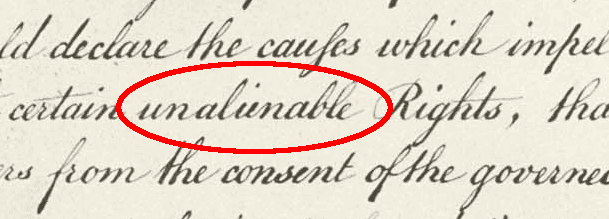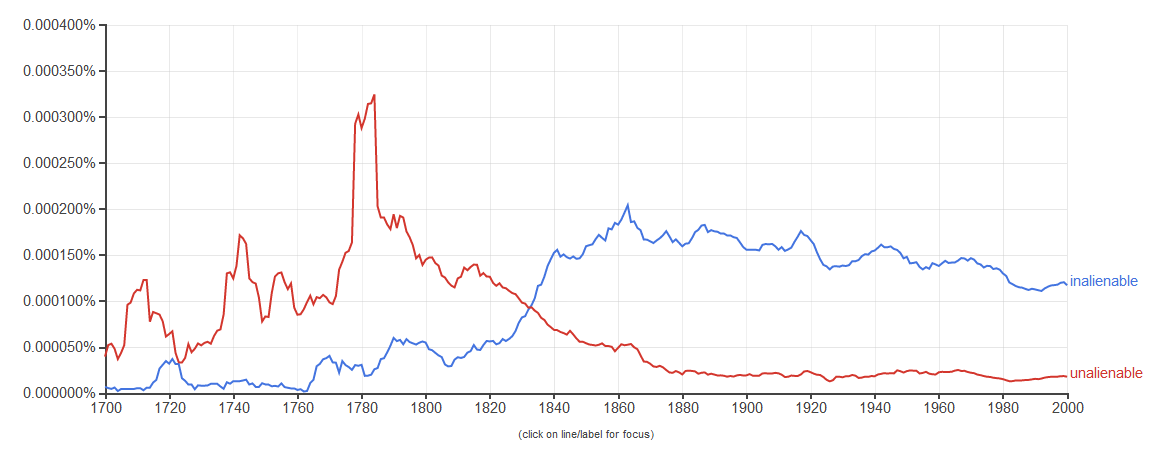- 3-minute read
- 4th July 2020
Word Choice: Inalienable vs. Unalienable (An Independence Day Special)
Today is Independence Day in the USA. But did you know about the linguistic controversy related to this day? It is about the word ‘unalienable’, which appears in the Declaration of Independence. This isn’t a spelling we really use any more, though, with ‘inalienable’ much more common.

So what is the difference? Why does the Declaration of Independence use ‘unalienable’? And when should you use each spelling?
The Meaning of Inalienable and Unalienable
First, let’s look at the difference in meaning between these words…
There isn’t one. Nada. Zilch. No difference at all. ‘Inalienable’ and ‘unalienable’ both mean ‘can’t be taken away’.
Some older dictionaries may suggest a slight difference (e.g. the legal distinction between a right that cannot be taken under any circumstances and one that can only be taken with consent). But this is quite old-fashioned and certainly not an issue when we use these terms in everyday language.
So whether we speak of ‘inalienable rights’ or ‘unalienable rights’, we mean rights that can’t be denied. In practice, then, the only difference is that ‘inalienable’ is now much more common.
Different Drafts, Different Spellings
So, why does the Declaration of Independence use ‘unalienable’?
Spelling variants were common at the time, and ‘unalienable’ was the most common version of this term. It also enjoyed a spike in popularity after the Declaration of Independence was signed. But since the mid-nineteenth century, ‘inalienable’ has been the standard spelling.
Find this useful?
Subscribe to our newsletter and get writing tips from our editors straight to your inbox.
Subscribe to Beyond the Margins and get your monthly fix of editorial strategy, workflow tips, and real-world examples from content leaders.

Oddly, though, this controversy could have been avoided. This is because the spelling ‘inalienable’ appears in other drafts of the Declaration of Independence, including Thomas Jefferson’s original draft.
It was only when John Adams made a copy in his own handwriting that ‘unalienable’ first appeared. And it was used in the final version, kick-starting a spelling debate that survives to the current day.
A Tale of Two Prefixes: Un- vs. In-
Why, then, has ‘inalienable’ won out? In terms of meaning, the prefixes un- and in- are both negations. As such, they go before a word to cancel it out or suggest its opposite. The opposite of ‘happy’, for example, is ‘unhappy’. And the opposite of ‘elegant’ is ‘inelegant’.
The same is true with unalienable and inalienable. But the word ‘alien’ comes to us from Latin. And while the prefix in- also has Latin roots, un- comes from German. Nineteenth-century linguists therefore decided than in- was the better prefix for ‘alienable’. And since then it has stuck.
Or it has in most cases. Even these days, when people are writing about the Declaration of Independence, many prefer the spelling ‘unalienable’.
Summary: Inalienable or Unalienable?
As set out above, both of these words mean ‘can’t be taken away’. However, each spelling has its own place in modern English:
- Inalienable is the standard spelling of this term in most contexts.
- Unalienable is a rare variant of ‘inalienable’, but you can use it when quoting from or discussing the Declaration of Independence.
Hopefully, this has settled some of your Independence Day spelling questions. But if you need any more help with your writing, feel free to send us a document for proofreading today.